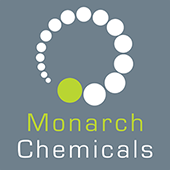Discovered around 200BC when bamboo was tossed into fire, the Chinese have been credited with the earliest discovery by making these unintentional firecrackers. It then wasn’t until around 800AD for gunpowder to be created when an alchemist desperately seeking a formula for eternal life accidentally set his mixture of sulphur, charcoal and potassium nitrate on fire for fireworks to start their journey.
At this time, fireworks were simple – void of any colour or theatre and ritualistically used to ward off spirits by throwing paper packets of this mixture onto fires. It then took hundreds of years of military advancements, technological discoveries and better understanding of science, engineering and chemistry to get to where we are today.
Fireworks today are a chemical masterpiece combing propellants, fuels, binders and elements that emit colour to produce luminance, noise and a perfectly timed sequence of events.
What is the chemistry of fireworks?
There is chemistry involved in every single component of a firework from the shell through to the metal salts and depending on the style and end result, the possibilities are almost endless.
First off – the touch paper. This has actually been replaced with plastic igniter cord, which is typically a black powder core (potassium nitrate, charcoal and sulphur) with a wound textile overwrap. This is then coated with a wax or a lacquer to provide water resistance. The old blue touch paper in vintage fireworks was a simpler product made from low quality newsprint paper treated with a solution of potassium nitrate .
Firework fuel is primarily gunpowder; potassium nitrate, charcoal and sulphur which generates enough energy to propel the firework and keep the firework burning for the required amount of time.
Fireworks also need oxygen to burn which is where chemicals with a high 02 content are used to release additional oxygen and facilitate a more impressive explosion. These are typically nitrates, chlorates and perchlorates.
Colours – This is where the chemistry really comes into play as compounds, selected for their ability to produce an intense colour when burned are used. Most often metal salts, these colourants are normally contained in a section surrounded with gunpowder pellets (which force the firework to break apart) and held together by a chemical binder made from dextrin to keep all the component parts together and in the correct order.
The different colours are solely dependent on the chemicals used in each firework and our chemistry of firework colours infographic below details the most commonly used.

Chemistry of Fireworks Infographic Download (attribution required)
From the factory to the sky, fireworks are the perfect visual representation of creative chemistry!



